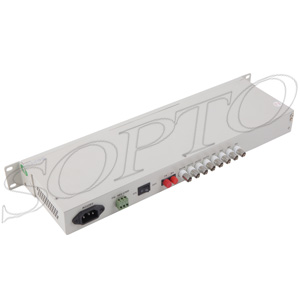- Fiber Optic Transceiver Module
- High Speed Cable
- Fiber Optical Cable
- Fiber Optical Patch Cords
- Splitter CWDM DWDM
- PON Solution
- FTTH Box ODF Closure
- PCI-E Network Card
- Network Cables
- Fiber Optical Adapter
- Fiber Optical Attenuator
- Fiber Media Converter
- PDH Multiplexers
- Protocol Converter
- Digital Video Multiplexer
- Fiber Optical Tools
- Compatible
- Can SFP+120KM be available? ...
- Why the price has so huge di...
- Can XFP transceiver modules ...
- Must optical fiber jumper be...
- Is there a module which can ...
- Can different brands SFP tra...
- How long will you change you...
- The difference between DDM S...
- Comparison of EPON and GPON
- Should we use 3rd party’s ...
- How to make differences betw...
- What is Drop Cable?
- Comparison of CWDM and DWDM ...
- GEPON Technology
- Differences of OM1, OM2, OM3...
- What is the armored fiber op...
- What is DAC cable?
- How to Choose A Right Fusion...
- Why Using a Compatible SFP O...
- Optical fiber transmission l...

What is PDH?
 The Plesiochronous Digital Hierarchy (PDH) is a technology used in telecommunications networks to transport large quantities of data over digital transport equipment such as fibre optic and microwave radio systems. The term plesiochronous is derived from Greek plēsios, meaning near, and chronos, time, and refers to the fact that PDH networks run in a state where different parts of the network are nearly, but not quite perfectly, synchronised.
The Plesiochronous Digital Hierarchy (PDH) is a technology used in telecommunications networks to transport large quantities of data over digital transport equipment such as fibre optic and microwave radio systems. The term plesiochronous is derived from Greek plēsios, meaning near, and chronos, time, and refers to the fact that PDH networks run in a state where different parts of the network are nearly, but not quite perfectly, synchronised.
PDH is typically being replaced by Synchronous Digital Hierarchy (SDH) or Synchronous optical networking (SONET) equipment in most telecommunications networks.
PDH allows transmission of data streams that are nominally running at the same rate, but allowing some variation on the speed around a nominal rate. By analogy, any two watches are nominally running at the same rate, clocking up 60 seconds every minute. However, there is no link between watches to guarantee they run at exactly the same rate, and it is highly likely that one is running slightly faster than the other.
Implementation
The basic data transfer rate is a data stream of 2048 kbit/s. For speech transmission, this is broken down into thirty 64 kbit/s channels plus two 64 kbit/s channels used for signalling and synchronisation. Alternatively, the entire bandwidth may be used for non-speech purposes, for example, data transmission.
The data rate is controlled by a clock in the equipment generating the data. The rate is allowed to vary by ±50 ppm of 2.048 Mbit/s. This means that different data streams can be (probably are) running at slightly different rates to one another.
In order to move multiple data streams from one place to another, they are multiplexed in groups of four. This is done by taking 1 bit from stream #1, followed by 1 bit from stream #2, then #3, then #4. The transmitting multiplexer also adds additional bits in order to allow the far end receiving multiplexer to decode which bits belong to which data stream, and so correctly reconstitute the original data streams. These additional bits are called "justification" or "stuffing" bits.
Because each of the four data streams is not necessarily running at the same rate, some compensation has to be introduced. The transmitting multiplexer combines the four data streams assuming that they are running at their maximum allowed rate. This means that occasionally, (unless the 2 Mbit/s really is running at the maximum rate) the multiplexer will look for the next bit but it will not have arrived. In this case, the multiplexer signals to the receiving multiplexer that a bit is "missing". This allows the receiving multiplexer to correctly reconstruct the original data for each of the four 2 Mbit/s data streams, and at the correct, different, plesiochronous rates.
The resulting data stream from the above process runs at 8,448 kbit/s (about 8 Mbit/s). Similar techniques are used to combine four × 8 Mbit/s together, plus bit stuffing, giving 34 Mbit/s. Four × 34 Mbit/s, gives 140. Four × 140 gives 565.
565 Mbit/s is the rate typically used to transmit data over a fibre optic system for long distance transport. Recently, telecommunications companies have been replacing their PDH equipment with SDH equipment capable of much higher transmission rates. 2.048 Mbit/s 8.448 Mbit/s 34.368 Mbit/s 139.264 Mbit/s Multiplex levels: Uses Positive justification to adapt frequency differences Overheads: CRC Defects: LOS, LOF, AIS


